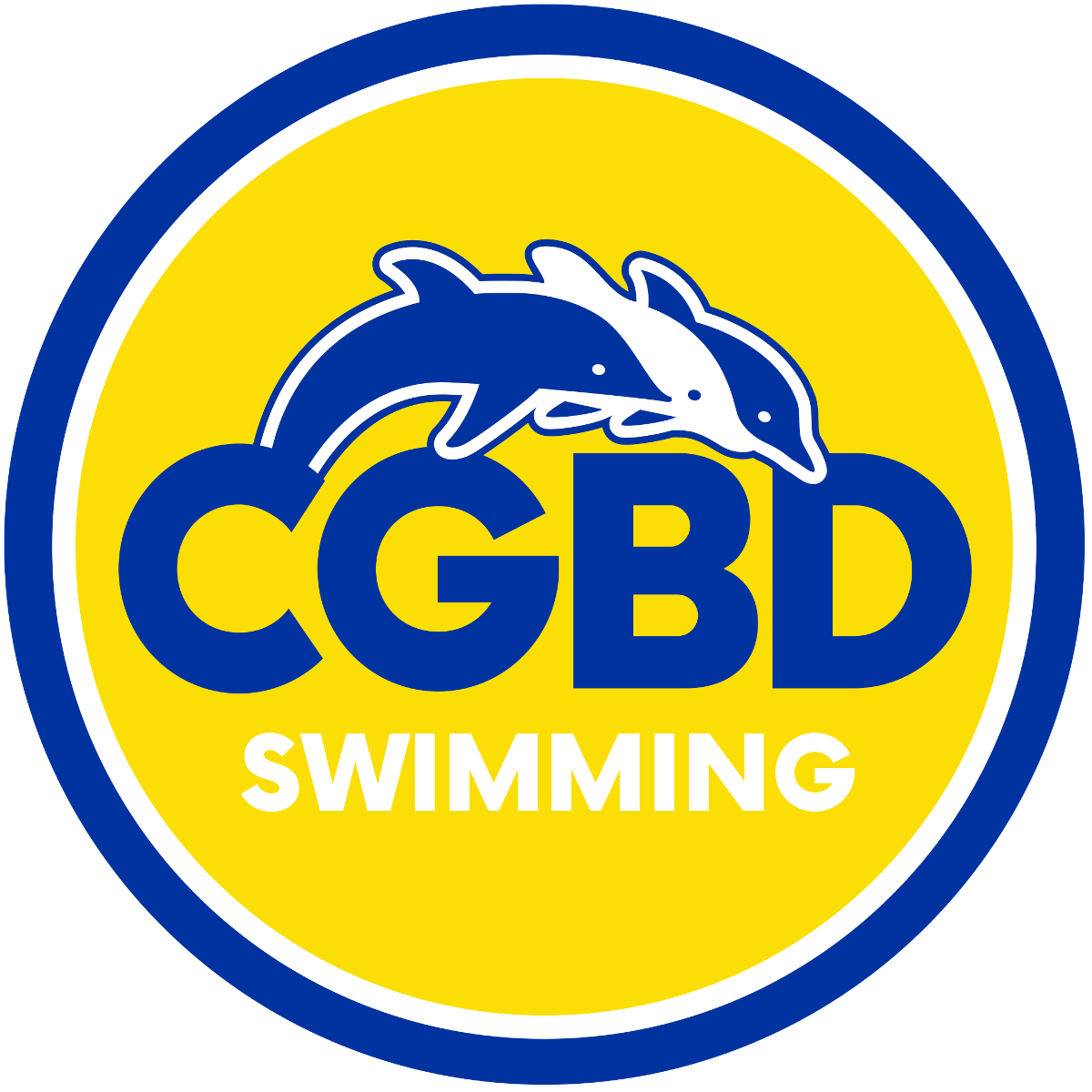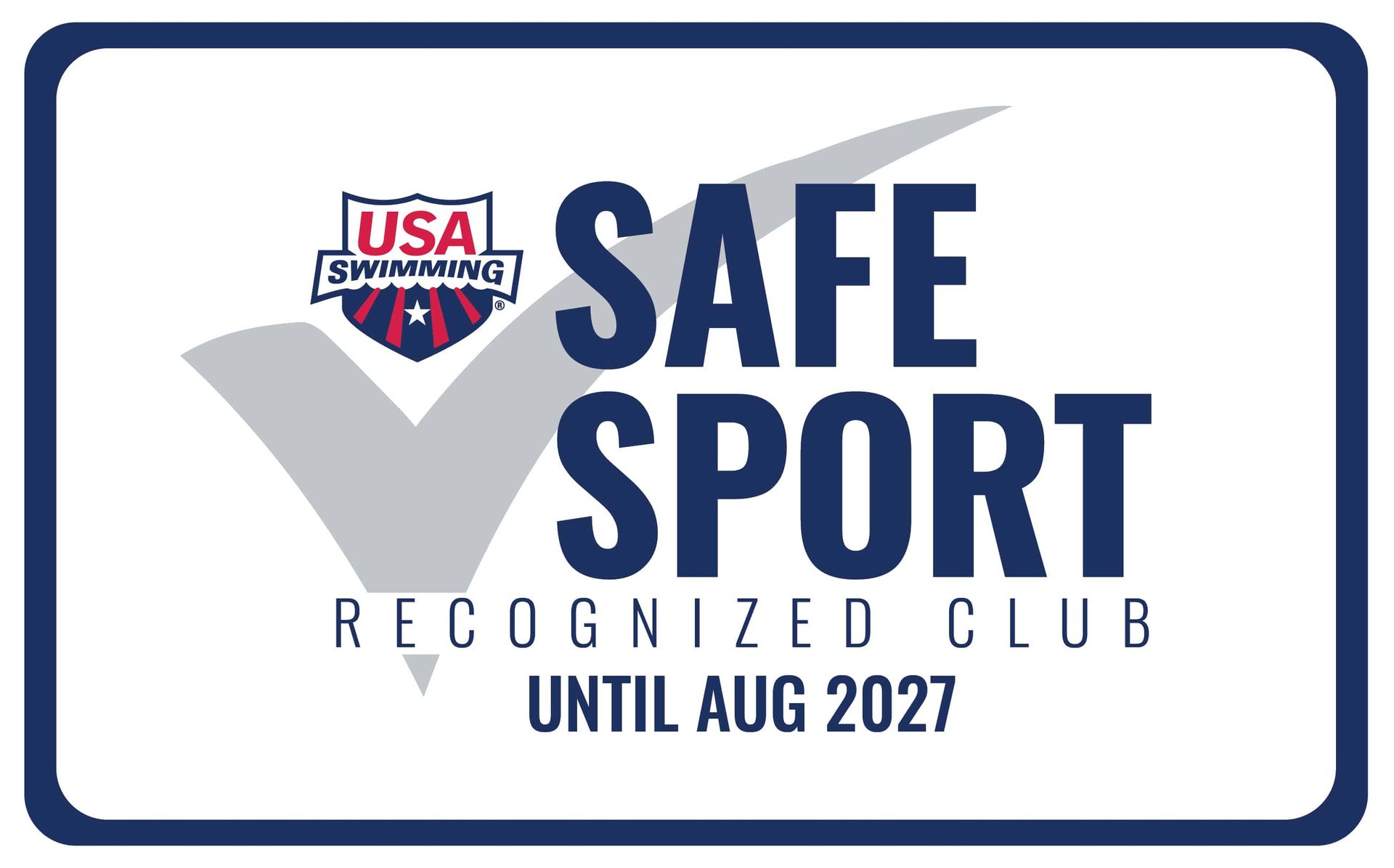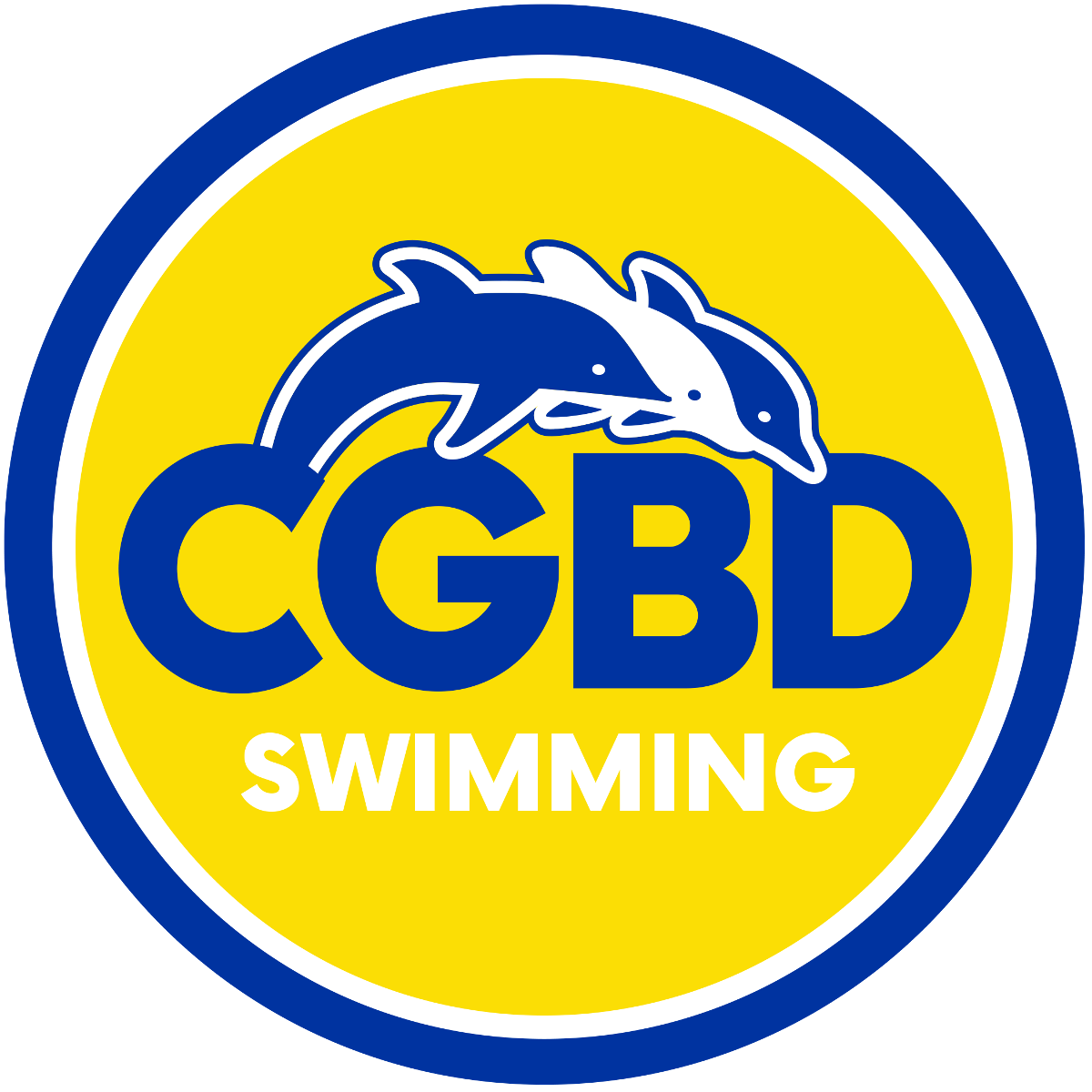Swim Team FAQ and Glossary
Swim Team FAQ and Glossary of Terms
Understand the language of the pool — From freestyle to flip turns, learn the lingo every swimmer should know
Frequently Asked Questions
Why are we making an improvement to the group structure?
The coaching staff revamped our current structure to improve practice group dynamics and overall program efficiency. The new group structure will allow coaches to have more time to focus on individual athletes' needs and progress, and provide more personalized guidance.
When will I know what group my swimmer will be in next year?
You will be notified by the coaches within a couple of days of the general membership meeting.
When does registration open?
Registration for the 2025-2026 season is scheduled to open July 1.
How will my swimmer know when they are ready to move to the next group as the season progresses?
Swimmers will move to the next group once they have completed the required prerequisites for the next group, as well as a recommendation from the coach. Coaches will communicate with swimmers and parents about the specific requirements to move up a group.
How will my swimmer be placed? According to grade or birthday? What if I held my child back a grade?
Your swimmer will be placed according to the following guidelines for each group.
⇒ Dolphin: 10&U
⇒ Age Group: 11-14 year olds
⇒ Senior: 14 and older
**Exceptions will be considered based on coach recommendations and swimmer readiness
When will move-ups occur, and what is the move-up process?
Coaches will communicate with the parents and swimmers on specific requirements for moving into the next group. Moves from one group to the next will take place generally two times per year, the beginning of short course season and the beginning of long course season. Occasionally, move-ups will be considered after the Christmas championship meets. Dolphin prep swimmers may be moved up on a more regular basis.
How do I apply to have my swimmer moved to a different group as an exception?
If you believe your swimmer is ready to move to the next group, please contact your swimmer’s coach about specific requirements that may need to be completed in order to move to the next level.
What is the best way to contact my swimmer’s coach if I have questions about the groups?
Our coaches are always happy to answer questions, discuss your swimmer’s progress, or address any other concerns you may have; however, during practice, we want to ensure that our coaches remain focused on our swimmers in the pool.
For quick questions or discussions, the best time is either just before or after practice. For longer questions or discussions, it may be best to email the coach to find a time to talk at a time convenient for everyone. Coaches are also happy to respond to most questions over email.
Does my swimmer need to attend every practice?
CGBD offers practice opportunities throughout each week designed to give each swimmer the appropriate edge on the competition. We understand our swimmers participate in many activities. Please make every effort to meet the required number of practices each week.
Does CGBD swimming end after Spring Break?
USA Swimming is divided into two seasons: short course and long course. Generally, short course is from September through March, and long course is April through August.
We encourage swimmers to participate in both seasons. The experience young swimmers get in long course gives them confidence as they grow in the sport.
Should my swimmer participate summer league?
CGBD has always encouraged summer league participation and recognizes its importance in confidence building and can provide opportunities for CGBD swimmers to coach and mentor.
CGBD has the following expectations for swimmers who wish to also swim summer league:
Dolphin Yellow, Age Group Yellow, Senior and Senior National groups are encouraged to make CGBD practices a priority. It is their responsibility to represent CGBD on an LSC and national level. Participating in summer league meets and helping to coach, as swimmers get older, is encouraged as long as it does not interfere with meeting practice requirements.
Dolphin Blue, Age Group Blue, and Senior Prep are encouraged to swim CGBD two to three times per week. Dolphin Prep and Age Group Prep groups are encouraged to swim with CGBD 1-2 times a week.
Which meets will my swimmer go to?
Before the season begins, CGBD will release the meet schedule for the year that will show which groups are eligible to swim in each meet, as well as any other eligibility requirements (cut times, time standards, etc.). Please note that the meet schedule is updated throughout the season. Check the website, as well as, weekly emails for the latest on each upcoming meet. If you have any questions about which meet your swimmer should attend, please contact your swimmer’s coach.
Do I have to register with USA Swimming?
All swimmers practicing with a member club or competing in events sanctioned by USA Swimming must be registered as athlete members of USA Swimming.
Dolphin Blue, Dolphin Yellow, Age Group Prep, Age Group Blue, Age Group Yellow, Senior Prep, Senior, and Senior Nationals are required to hold a Premium USA Swimming Membership. There is no limit to the number of meets this membership allows.
Dolphin Prep is eligible for a USA Swimming flex membership. With the flex membership, swimmers may participate in two USA Swimming sanctioned meets per membership year, except meets that are part of the Virginia Swimming championship meet progression (District Champs, Region Champs, Summer Awards, Senior Champs, or Age Group Champs).
Glossary of Terms
AGE GROUP - The division of swimmers according to age, usually in two-year bands. In USA Swimming, swimmers compete within their respective age groups, usually in the following manner: 10&Younger, 11-12, 13-14, 15-16, and 17-18. Most meets combine the two older age groups into a 15-18 age group. A swimmer’s age at a meet is determined by the first day of the competition.
AGE GROUP CHAMPS –Season ending championship meets for Virginia Swimming, one in each course, for swimmers aged 14 and younger who meet the qualifying times.
CHAMPIONSHIP HEAT - Is the fastest heat (6 or 8 swimmers) of Finals when multiple heats are held and is usually conducted last, after the Bonus (C Final) and Consolation (B Final) heats.
CHASE STARTS - A procedure where both ends of the pool are used for starting events. It saves significant time during the meet because of an overlap that occurs after the swimmers make their last turn and are headed to a finish with the next heat “Chasing” them. Chase starts are only used in a 50 meter pool during long course season.
CIRCLE SEEDING - A method of seeding preliminary heats in which the fa\stest swimmers race in the middle of the pool and in separate heats. The swimmers in the top 3 heats are intermingled so that the fastest three swimmers are in the middle lanes of the last 3 heats, the next 3 in the lane next to that in each of those heats and so forth. Also known as pyramid seeding.
| Heat | Lane1 | Lane2 | Lane3 | Lane4 | Lane5 | Lane6 | Lane7 | Lane8 |
|---|---|---|---|---|---|---|---|---|
| 20 | 15 | 9 | 3 | 6 | 12 | 18 | 24 | |
| 20 | 14 | 8 | 2 | 5 | 11 | 17 | 23 | |
| Last | 19 | 13 | 7 | 1 | 4 | 10 | 16 | 22 |
CONSOLATION HEAT- This is an extra heat held during the finals session of a prelims/finals meet, usually for the swimmers who are next fastest after the top swimmers (who race in the finals heat).
CUT- A qualifying time for championship meets (e.g., Age Group Champs, Senior Champs, National Champs).
DISQUALIFICATION (DQ)- At a meet, when a swimmer breaks a rule of swimming, they are disqualified. (For example, if a swimmer finishes a breaststroke race by touching the wall with only one hand, instead of two.) Their race is "not counted," and the swimmer will not receive a time. Disqualifications are indicated on meet results with "DQ" in place of the swimmer's time. During the race, meet officials will indicate a disqualification by raising one arm with an open hand above their head.
DECK SEEDING - Usually at "A" and above meets, but also at some "B-C" meets, the longer events will deck seeded. Swimmers will be given lane assignments just prior to swimming. A check-in will be held early in the meet to determine who is present, so that full heats will be swum.
DISTANCE - How far a swimmer swims in an event. Distances for Sort Course are: 25 yards/meters (1 length), 50 yards/meters (2 lengths), 100 yards/meters (4 lengths), 200 yards/meters (8 lengths), 400 meters (16 lengths), 500 yards (20 lengths), 800 meters (32 lengths), 1000 yards (40 lengths), 1500 meters (60 lengths), and 1650 yards (66 lengths). Distances for Long Course are: 50 meters (1 length), 100 meters (2 lengths), 200 meters (4 lengths), 400 meters (8 lengths), 800 meters (16 lengths), 1500 meters (30 lengths).
DRYLAND -The program of exercises and various strength regimens swimmers do out of the water.
FALSE START- When a swimmer is in motion or leaves the starting block before the starting signal is given. One false start will disqualify a swimmer or a relay team.
FINALS- The session of a meet where qualifying rounds were previously held to determine the finalists (usually 6 to 20 in number, depending on pool size and whether or not consolation finals are being held). The finalists compete to determine the winner.
ISCA (INTERNATIONAL SWIM COACHES ASSOCIATION)- Hosts an elite senior meet and age group meet for athletes each spring in St. Petersburg, FL. The organization occasionally hosts other swim opportunities as well.
HEAT SHEET- A listing of all swimmers in a meet by event, heat, and lane assignments.
LOCAL SWIMMING COMMITTEE (LSC) - One of 59 administrative divisions of USA Swimming with supervisory responsibilities within certain geographical boundaries designated by USA Swimming. Virginia Swimming, Inc. (VSI) is our LSC.
LONG COURSE - A type of competitive pool which measures 50 meters in length. This is the standard course for International, Senior National and Olympic competition. The swim year is divided into two seasons: Short Course season, competed in 25-yard/meter pools during fall and winter, and Long Course season, competed in 50-meter pools during spring and summer.
LCM - Abbreviation for Long Course Meters.
NT- USA Swimming abbreviation for "no time." Appears in place of a time on the heat sheet to indicate that a swimmer has not raced the event before.
OPEN WATER - Any non-pool swimming locale, typically oceans, lakes, and rivers.
OVERHEAD STARTS - Start procedures at a meet in which swimmers of the previous heat remain in the water, close to the wall, during the start of the next heat.
QUALIFYING TIME - The time a swimmer must have achieved previously in an event in order to enter a meet.
PRELIMS - In certain meets, especially championship meets, the qualifying rounds used to determine the finalists. These meets are usually set up to swim Prelims in the morning and Finals in the evening.
PSYCH SHEET - A printed order of events by session with swimmers listed in order, usually fastest to slowest according to their entry times. It does not show heats. After scratches are turned in, the session is seeded and heat sheets are printed.
REFEREE - The USA Swimming official who has authority over all other officials at a swim meet. He/She makes all final decisions and sees to the efficient running of the meet.
SCM - Abbreviation for Short Course Meters.
SCRATCH -To withdraw from an event after having declared an intention to participate. In a Prelims and Finals (championship) format, swimmers who qualify for finals usually have 30 minutes to withdraw if they don’t wish to participate. Failure to participate in finals without scratching normally results in disqualification from the rest of the meet. In a timed finals format, there’s no penalty for missing an event without scratching.
SEED TIMES - The time a swimmer uses to enter competitions. This time (generally the swimmer's best time) is used to determine a swimmer's heat and lane, when compared to other entrants. This system ensures that each swimmer is competing immediately with swimmers with similar best times.
SENIOR CHAMPS - In Virginia Swimming, season-ending championship meets, one in each course, for senior swimmers (usually, aged 15 and older) who meet the qualifying times.
SHORT COURSE - A type of competitive pool measuring 25 yards or 25 meters in length.
SUPER SECTIONALS - A USA Swimming sanctioned, senior-level meets are typically offered during the spring or summer.
SPLIT- A per lap time that coaches use to determine pace for each swim.
STARTER - The USA Swimming official at a meet responsible for starting each heat, calling the next heat to the block, and ensuring that each swimmer gets a fair start.
STROKE AND TURN JUDGE - A USA Swimming certified official who determines the legality of a swimmer's strokes and notifies the Referee of disqualifications, if necessary.
SWIM OFF - A tie-breaker race. Used at prelims/finals-formatted meets to determine which swimmer gets to race in finals, or if there is a tie for the alternate spots.
TAPER - The final recovery phase of a training plan before an end-of-season championship meet. During taper, the swimmer reduces the intensity and length of workouts in the weeks or days leading into an important race. This allows the body to fully recover, or repair itself, from the training of the previous weeks and months.
TIMED FINAL - A meet format in which swimmers' times from the heats are their final time in the event. The swimmers with the fastest times are the event winners.
TIME STANDARDS - A set of times by course, event, age group, and classification established by USA Swimming for classifying swimmers for entry into meets (e.g., a 10 year-old girl who’s best time in the 50y Freestyle is 32.05 seconds is classified as an “A” swimmer and can’t compete in a BB/B/C/Mini meet in that event). The time standards are updated every four years and are based on the Top 16 times for each event/age group. Also, Qualifying Times.
TOUCH PAD - The part of the electronic timing system that rests against the wall at the finishing end of each lane. Swimmer's times are electronically recorded when the pad is touched.
UNATTACHED - The status a swimmer receives when he/she changes from one USA Swimming club to another. Swimmers must be "unattached" for 120 days from their last competition for one club until they can compete for their new club. During this time they may swim for a club in individual events, but may not score or swim on relays. Represented by "UN" or "UNAT" in the meet program.
USA SWIMMING - The abbreviation for United States Swimming Inc. which is the governing body for all amateur swimming in the United States.
ZONES - Eastern Zone All-Star Championship Meet contested twice a year at the end of each season. In Short Course, the LSC teams consist of the top two swimmers in each event/age group. In the Long Course, swimmers must meet qualifying times (usually AAA).


